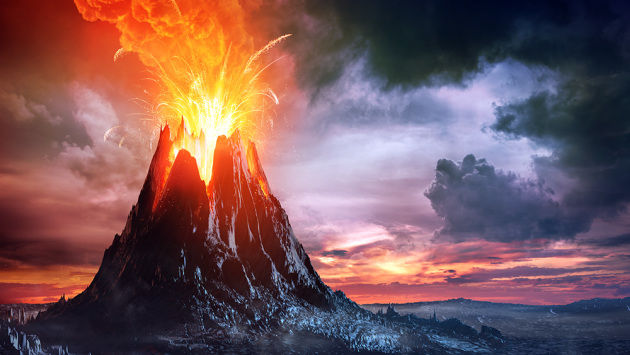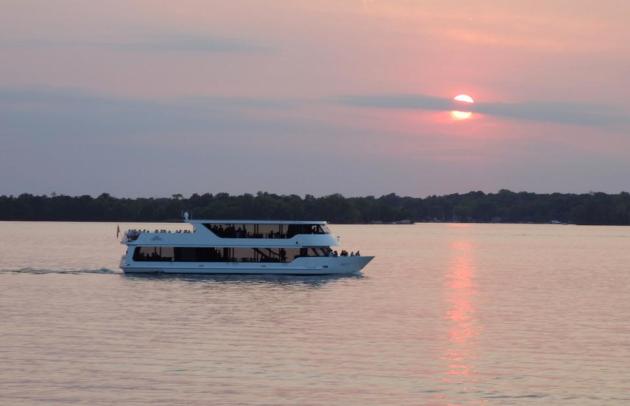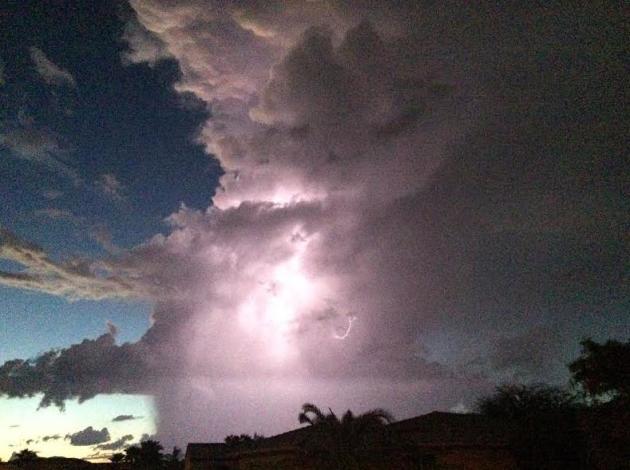Black Friday? Try to Avoid a “Brown Friday”
Ah, the things I’ve learned researching my WCCO Radio show. Plumbers lovingly refer to today as “Brown Friday”, due to an uptick in turkey-related house calls. It seems people pour grease and bones down the drain after their Thursday feast, and by Friday it’s a kitchen-crisis. I know, more than you ever wanted to know.
I’m stalling for time because the weather pattern into early December falls somewhere between lackluster and dull. And I’m absolutely OK with that. Early November felt a little like January; now the last few days of the month will feel more like early October.
Expect 50s today with a passing afternoon rain shower or sprinkle. Odds are it’ll be perfectly dry inside the mall. I don’t see anything I’d characterize as a “storm” into next week. Wednesday’s rainy smudge tracks across Iowa; models hinting at a cold rain or light mix one week from Saturday. ECMWF guidance shows 40s most of next week; about 10F warmer than average for late November.
Statistically 7 of 10 Christmas Days in the Twin Cities are “white”, with an inch or more of snow. Place your bets.
Saturday Travel Weather. A light mix is expected Friday across the Upper Midwest and Great Lakes (warm enough for rain showers over central and southern Minnesota). By Saturday storms focus on New England the the west coast of the USA with fairly quiet, dry weather over the central USA.
Snowfall Potential Into Sunday Night. The atmosphere will be too mild for accumulating snow tomorrow, although a little slush is possible far northern counties Friday evening and night. Any plowable amounts stay well north of the USA into Sunday night – a reprieve for travelers. NAM data: Tropicaltidbits.com.
Above Average Into Late November. The atmosphere has an uncanny way of compensating, of “evening things out over time”. A numbing start to the month is now giving rise to an October-like end to November. What little snow there was up north is melting fast. Twin Cities ECMWF numbers: WeatherBell.
Peering Over the Horizon. By December 7 the GFS model from NOAA hints at a full-latitude trough capable of a significant storm over the Midwest and Great Lakes – possibly cold enough for snow across Minnesota (although this far out that’s pure speculation). Relatively mild weather lingers across the western USA and western Canada.
As World Turns More Slowly, We Face Earthquake Boom, Scientists Warn. This one had me scratching my head (which I’m doing more often these days) but just in case they’re right, here’s a clip from HuffPost: “…It seems contradictory, but a minuscule slowing of the Earth’s rotation over years, which can extend the length of a day by a millisecond or more, appears to be linked to an increase in major quakes. Roger Bilham of the University of Colorado and Rebecca Bendick of the University of Montana say that historical data since 1900 clearly reveal a “strong” link between major global earthquake activity and a slight slowing of the Earth’s rotation for five or six years. That has occurred approximately every 32 years. If that pattern continues, the number of powerful quakes in the coming year could triple, according to the researchers. “On five occasions in the past century, a 25 [to] 30 percent increase in annual numbers of earthquakes [of a magnitude 7.0 or greater] has coincided with a slowing in the mean rotation velocity of the earth,” the scientists noted in a research abstract...”
More perspective from temblor.net.

When Will the Earth Try to Kill Us Again? A little light reading, courtesy of Ars Technica. Here’s a clip: “…This isn’t your regular Vesuvius/St. Helens/Hawaii style volcanism. It’s not even super-volcanoes like Yellowstone or Tambora. I’m talking about something far, far bigger: a rare, epic volcanic phenomenon called a Large Igneous Province or “LIP.” LIPs are floods of basalt lava on an unimaginable scale: the Siberian Traps LIP, which erupted at the end-Permian extinction, covers an area the size of Europe. It’s estimated that over 3 million cubic kilometers of rock were vomited onto the planet’s surface, The end-Triassic Central Atlantic Magmatic Province, stretching from Canada to Brazil into Europe and West Africa, was just as large. Others are similarly gigantic. In the words of Bond and Grasby, “Four of the ‘Big Five’ extinctions are associated with LIPs—too many to be mere coincidence —implying that large-scale volcanism is the main driver of mass extinctions...”
By 2050, There Will Be More Plastic in the Ocean Than Fish. A story at Big Think got me thinking: “…How prevalent is the plastic problem? Consider there are a number of garbage patches throughout the world. Over eight million tons of plastic enter the waste stream each year. 91% of it isn’t recycled. That means it sits in landfills and eventually makes its way to the ocean. It’s also long-lived. Plastic takes 400 years to break down. There’s estimated to be 6.3 billion metric tons of plastic waste on Earth. By the middle of this century ton for ton, they’ll be more plastic in the ocean than fish. All of this we’ve known. What we haven’t know until now, is how deep this oil-based refuse has sunk. We all must pitch in to help stem the flow of plastics into the ocean. What can you do? First, purchase clothing that’s made of 100% natural material, such as cotton, silk, hemp, wool, linen, or cashmere…”
Image credit: Newcastle University.
New Study Reaches a Stunning Conclusion About the Cost of Solar and Wind Energy. ThinkProgress has the article: “In one of the fastest and most astonishing turnarounds in the history of energy, building and running new renewable energy is now cheaper than just running existing coal and nuclear plants in many areas. A widely-used yearly benchmarking study — the Levelized Cost of Energy Analysis (LCOE) from the financial firm Lazard Ltd. — reached this stunning conclusion: In many regions “the full-lifecycle costs of building and operating renewables-based projects have dropped below the operating costs alone of conventional generation technologies such as coal or nuclear…”
Photo credit: Patrick Pleul/dpa via AP file.
China is Winning Electric Cars “Arms Race”. So says an article at CNN Money: “China is outmaneuvering the U.S. and other countries in the global scramble for a vital element for electric cars. As demand for the vehicles surges, Chinese companies have been doing deals around the world to secure supplies of lithium, a silvery-white metal mined from rocks in Australia and brine pools in South America. China is the top market for electric and hybrid cars, accounting for roughly half of global sales, and the government is pushing the development of the industry within its borders. That calls for a lot of lithium, a key component of the vehicles’ batteries...”

Happiest Cities in America, According to New Research. Here are a couple of nuggets from a CNN.com story: “…Boulder, Colorado, is the happiest city in America. Second is Santa Cruz, California, and Charlottesville, Virginia, is third. (You can find the rest of the list at NationalGeographic.com and in the cover story of the November issue of National Geographic magazine.) In these places, people feel safe and secure, have a sense of purpose and have joy in their day-to-day lives. In these communities, residents are able to weave together the essential strands of happiness: pride, pleasure and purpose…Our data show that people tend to be happiest close to water (lakes, ocean, rivers) and when they have access to nature, green spaces, and fruits and vegetables…”
These are the Happiest Cities in the United States. The Twin Cities ranks #22, one of only two “Happy Cities” in the Midwest. This is the cover story for National Geographic’s November issue referenced above; here’s an excerpt: “…National Geographic’s list of the 25 Happiest Places in the United States includes cities from Ann Arbor to Austin, San Diego to Charlottesville. At the bottom of the index (not included in our list) are America’s least-happy places, according to the study: Charleston, West Virginia; Fort Smith, Arkansas; and Hickory-Lenoir-Morganton, North Carolina. Research indicates that the variabilities of place play an important role in whether locals feel happy. In happier places, according to Buettner, locals smile and laugh more often, socialize several hours a day, have access to green spaces, and feel that they are making purposeful progress toward achieving life goals. For our index, it tracked factors that are statistically associated with doing well and feeling well; these include feeling secure, taking vacations, and having enough money to cover basic needs…”
Map credit: Jon Bowen, NatGeo Staff.
Since 2010, Sad Songs Have Become Less Common All Over the World. Quartz reports: “Researchers from Indiana University-Bloomington performed analyzed about 90,000 songs in English from different genres (such as classic rock, pop, punk, metal, R&B, and religious) written by musicians around the world, published since 1950, and posted on ultimate-guitar.com. They assessed the chords used in the songs and judged the emotional valence of lyrics using a common social-science scale that rates 222 different words on a scale of 1-9 in terms of their emotional positivity. “Love” for example is a high-valence word that rates a 9, while “pain” is a low-valence word that rates a 1. It turns out that worldwide, moody tunes are on the decline. Low-emotional-valence songs—tunes with negative lyrics—became increasingly common from 1950 to 2010, but since have been less commonly written. The researchers didn’t offer an explanation for the apparent increase in lyrical positivity, saying only that more study is needed…”
Image credit: “Writing the songs that make the whole world sing.” (Creative Commons/Collage el).
The Men Collecting Stardust from Gutters and Rooftops. A definite Minnesota angle to this story at Daily Beast: “The speck of cosmic dust likely traveled for billions of years at more than 100,000 miles per hour before chancing into the earth’s atmosphere and finally alighting on a rooftop at a community college in Minnesota. The speck came to rest at longer-than-long last sometime between the construction of the college building roughly three decades ago and a moment in early October. That was when a 35-year-old Army combat veteran turned micrometeorite hunter named Scott Peterson used a magnet to collect it along with thousands of non-cosmic metallic particles of just plain dust...”
Photo credit: Scott Peterson.
The Politics of Pie. Atlas Obscura explains how pumpkin pie became a symbol of anti-slavery sentiment during the 19th century: “…Although meant to unify people, the 19th-century campaign to make Thanksgiving a permanent holiday was seen by prominent Southerners as a culture war. They considered it a Northern holiday intended to force New England values on the rest of the country. To them, pumpkin pie, a Yankee food, was a deviously sweet symbol of anti-slavery sentiment…Plus, pumpkin pie calls for Northern ingredients such as squash and molasses. As more states—mainly in the North—recognized Thanksgiving, the pie became closely associated with Northern tradition…Southern leaders attacked Thanksgiving as the North’s attempt to impart Yankee values on the South...”
45 F. maximum temperature yesterday in the Twin Cities.
37 F. average high on November 23.
35 F. high on November 23, 2016.
November24, 1993: The Thanksgiving Day Blizzard of 1993. A slow moving storm system traveled across the Upper Midwest during the Thanksgiving holiday, causing heavy snow across most of Minnesota. Travel became extremely difficult if not impossible over west central Minnesota where over a foot of snow accumulated. A number of car accidents were reported and several community events were canceled. Snowfall in excess of six inches or greater occurred north of a line from Bricelyn (Faribault County) to the Twin Cities metro area.
November 24, 1983: A snowstorm dumps almost two feet at Babbitt and about 20 inches at Duluth.
November 24, 1825: A warm spell begins over Ft. Snelling. The temperature rises up to 70 degrees.
OVERNIGHT: Temps, rising to 43F by daybreak.
BLACK FRIDAY: Getting windy as clouds incease, PM shower or sprinkle. Winds: W 15-25. High: 52
FRIDAY NIGHT: Slow clearing, breezy and cooler. Low: 33
SATURDAY: Plenty of sun, cooler with less wind. Winds: NW 8-13. High: near 40
SUNDAY: Plenty of sun, no travel headaches. Winds: NW 5-10. Wake-up: 29. High: 47
MONDAY: Partly sunny, feels like October. Winds: SE 8-13. Wake-up: 39. High: 53
TUESDAY: Peeks of sun, windy and cooler. Winds: NW 10-15. Wake-up: 38. High: 43
WEDNESDAY: Filtered sun, rain may stay south. Winds: S 5-10. Wake-up: 31. High: 42
THURSDAY: Patchy clouds, cool breeze. Winds: NW 10-20. Wake-up: 33. High: near 40
Climate Stories…

Climate Change is a “Direct Threat to National Security” the Defense Bill Says. And Trump is Expected to Sign It. Here’s an excerpt from Washington Examiner: “The 2,400-page National Defense Authorization Act that Congress sent to President Trump last week is packed with new military policies and weapons purchases. But also tucked into the voluminous legislation is a warning about climate change, something Trump has openly ridiculed for years. Changing climate is a “direct threat” to U.S. national security, endangering 128 military bases with sea rise and global destabilization that could fuel terror groups, according to the NDAA, which is a bipartisan compromise struck by the House and Senate. The bill orders a Pentagon report on the top 10 at-risk bases and what should be done to protect them. Trump, who has described himself as a climate change skeptic, indicated he will sign the $700 billion policy bill, calling it an historic boost for the military that “could not come at a better time for our nation.” The provision is one among hundreds that offer defense reforms as well as more aircraft, ships and troops…”
How the Military Fights Climate Change. Here’s a link to a TED Talk from Admiral (Ret.) David Titley: “Military leaders have known for millennia that the time to prepare for a challenge is before it hits you, says scientist and retired US Navy officer David Titley. He takes us from the humanitarian catastrophe in Syria to the icy shores of Svalbard to show how the military approaches the threat of climate change, in a refreshingly practical, nonpartisan take on climate preparedness. “The ice doesn’t care who’s in the White House. It doesn’t care which party controls your congress. It doesn’t care which party controls your parliament,” Titley says. “It just melts.”
Current Global Warming Index. Yes, the vast majority of warming is triggered by human actions (burning of fossil fuels and deforestation). Here are the latest numbers from globalwarmingindex.org: “This graph shows an index of human-induced global warming relative to the mid-19th century (1850-79).”
Climate Change Brings Bigger Storms, Increased Rainfall: From Climate Nexus Hot News: “Increased warming will encourage wetter, wilder and more frequent thunderstorms, according to new research. A study published Monday in the journal Nature Climate Change projects that under a business-as-usual emissions scenario, larger storms will help the total amount of rainfall in the US South increase by 80 percent by the end of the century, while the Southwest will see a 60 to 70 percent increase. “We see increases that are beyond our expectations…far beyond our expectations,” the study’s lead author Andreas Prein told the AP. “It looks everything that can go wrong does go wrong concerning flooding.” (AP)
Weird Weather We’re Having. Can We Move On From Climate Change Denial? Here’s an excerpt of an Op-Ed at New Richmond News in western Wisconsin that caught my eye: “…Climate change is a real threat to humans and all forms of life on Earth. There is a strong consensus in the scientific community that humans have affected the climate, that changes are accelerating and that they pose an existential threat. There is no doubt that sea level rise is occurring and that severe weather events are becoming more frequent and extreme. Hurricanes Irma, Harvey and Maria, raging wildfires out west, record heat in California, devastating forest fires in Europe, a hurricane battered Ireland and record monsoons in south Asia all occurred this year. Here in Wisconsin, the Birkebiner ski race was cancelled this year for lack of snow. We’ve had five 100-year floods and one 1,000-year flood in Wisconsin in the last six years. Global temperatures have hit record highs for each of the last three years. The carbon dioxide concentration in our atmosphere is now at 407 parts per million, its highest level in at least 800,000 years...”
Photo credit: Jeff Williams, NASA.

Paid Vacation for Extreme Weather? Get ready for “climate leave”, according to a story at The Columbian: “Even the workplace has to adapt to the warming world. As climate change creates more intense storms, companies have started preparing for work disruptions due to extreme weather. In a sign of the times, Fog Creek, a software company based in New York City, recently announced it would provide up to five days of paid “climate leave” for employees who can’t work because of extreme weather events. If there’s a declared state of emergency, the company will give affected employees even more time. During previous hurricanes, wildfires and other natural disasters, the company let employees take time off on a case-by-case basis. One Miami-based employee had to evacuate during Hurricane Irma, and Sandy displaced most of the company back in 2012. Throughout the storms, Fog Creek continued to pay the staff...”


